Hidden ‘City of the Dead’ with more than 300 tombs that contain mummified families is discovered in Egypt
Scientists have discovered a huge tomb in Egypt with more than 300 graves. They call it the new ‘City of the Dead’.
The city of Aswan was an important trading, quarrying and military zone when it was first founded over 4,500 years ago, but the lives of its inhabitants have long remained a mystery.
The team has been working at the site for five years and recently uncovered 36 graves that have been reused over the course of 900 years. Each grave contains 30 to 40 mummies. Many of the graves contain families who likely died from infectious diseases.
Patrizia Piacentini, an archaeologist at the University of Milan, told DailyMail.com that the cemetery covers almost 85,000 meters and contained as many as 10 terraces of ancient tombs, in layers on the hillside near the modern Mausoleum of the Aga Khan III.
“This was a truly spectacular find, very unique in Egypt,” said Piacentini.
‘[The people who once lived in Aswan] covered the hill with graves. It is a kind of City of the Dead.’
Scientists have discovered a huge cemetery in Egypt with more than 300 graves that they are calling the new ‘City of the Dead’. The team has worked at the site for five years and recently uncovered 36 tombs that have been reused over 900 years, including 30 to 40 mummies.
One of the oldest continuously inhabited cities in the world, Aswan is located on the eastern bank of the Nile River.
There were quarries that provided the granite for many ancient Egyptian monuments that still stand today, and it was also a military base for the Romans, Turks and British.
The population included ancient Egyptian, Persian, Greek, Roman and subtropical Africa.
Aswan was originally called Swenett and later became Swan, which means market because the city is on a border where many goods are shipped to and from.
“Aswan has always been a crossroads,” Piacentini said.
‘People came from the east to the west. People came here because it was the border, products from the south arrived in Aswan and then spread everywhere else.”
The first tomb was uncovered in 2019 and contained four mummies – two believed to be mothers and children buried together.
“At first we thought it was mother and child, but new CT scans showed it was two children,” Piacentini said.
“But we recently found a woman with them who was probably their mother, and the remains of a man, probably the father.”
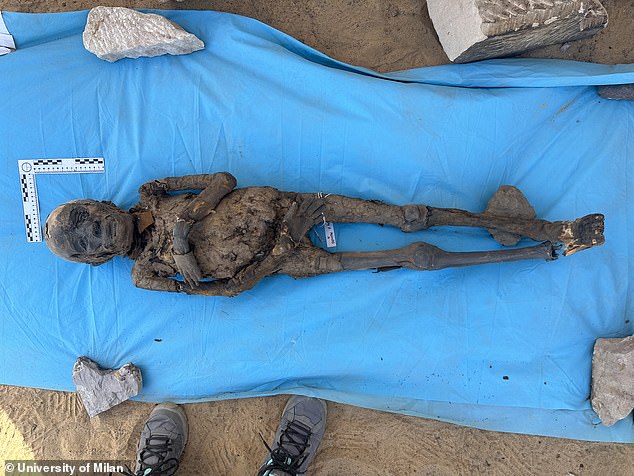
Many mummies showed signs of illness, with children suffering from anemia and malnutrition
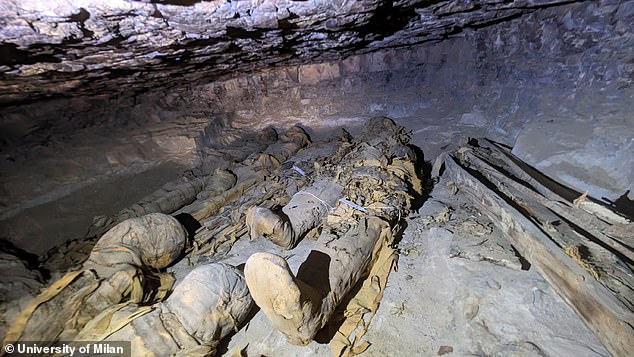
Research into the mummies revealed that 30 to 40 percent of those buried died in childhood, as newborns or adolescents.
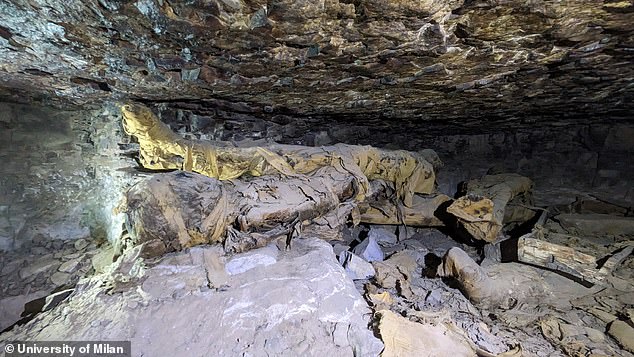
The latest excavations have found another 36 tombs that were reused over the centuries, each containing 30 to 40 mummies. Many of these tombs were entire families who experts believe died of infectious diseases.
The five-year excavations also revealed that people were buried based on their class.
The team discovered that the elite were buried at the top of the hill, including the mummified remains of Aswan’s commander-in-chief, while the middle class was buried below.
Although the team has found dozens of graves in each dig, the latest dig has revealed more secrets about the mysterious people who lived more than 2,000 years ago.
The 36 graves date from the period between the 6th century B.C. and the 9th century AD.
Some of them have a box entrance with an open courtyard surrounded by milkstone walls, while others are carved directly into mountain rock.
Ayman Ashmawy, head of the Egyptian Antiquities Department of the Supreme Council of Antiquities, said that research into the mummies “indicated that 30 to 40 percent of the buried mummies died at a young age, as newborns or adolescents.”
Among them was a mummy of a woman and a child who probably died at the age of one or two: their bodies were glued together in a stone coffin.
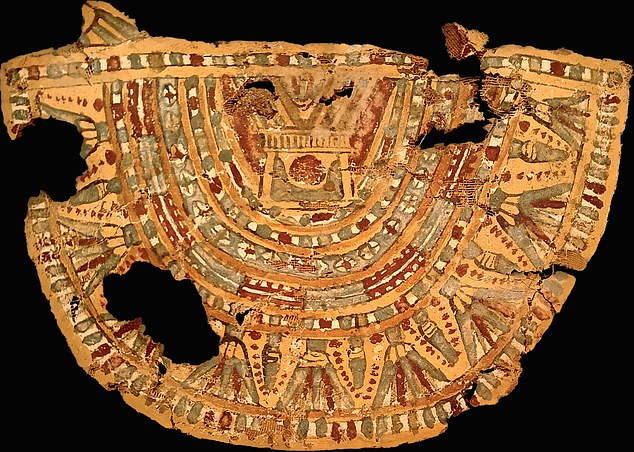
Some remains were wrapped cardboard or papier-mâché material, and burnt clay forms, stones, wooden coffins and offering tables
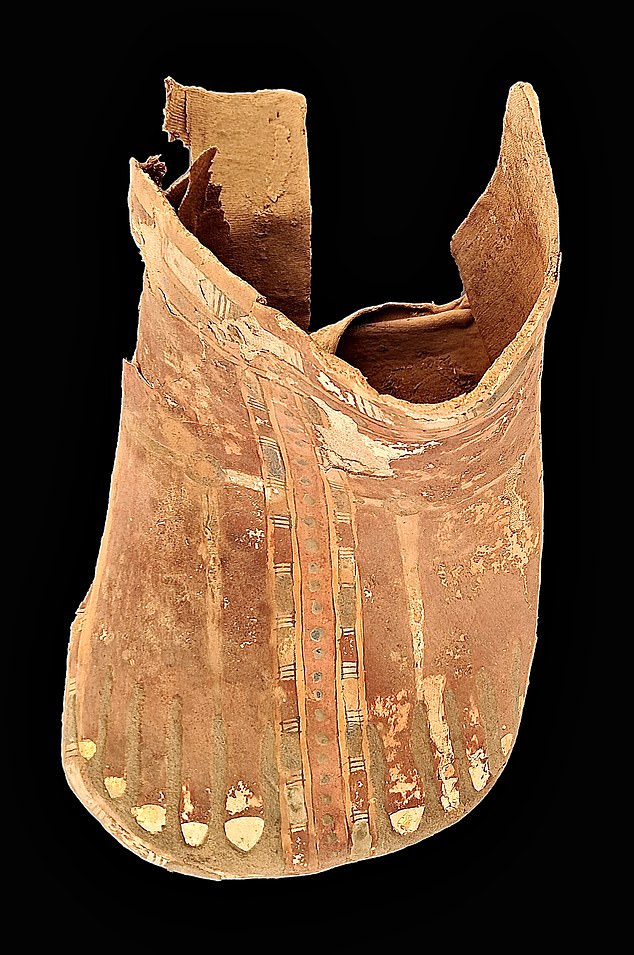
Offerings such as pottery, wooden objects and more were also found in the tombs – Piacentini said there were ‘many objects’
Some remains were wrapped cardboard, a papier-mâché material, and burnt clay molds, stones, wooden coffins, and offering tables.
Piacentini told DailyMail.com that preliminary examinations of the remains showed that “some suffered from infectious diseases, while others had bone diseases.”
“The children suffered from anemia, malnutrition and in some cases infectious diseases,” she continued.
‘Some of the bones we found showed clear signs of tuberculosis.
‘Another case of amputation was also found in a woman who had her leg removed but survived.’
Piacentini said the amputation, identified by a callus on her knee, was likely performed by a surgeon or doctor since she was alive after the operation.
Other mummies showed signs of breast and intestinal disease, and some women appeared to have osteoporosis.
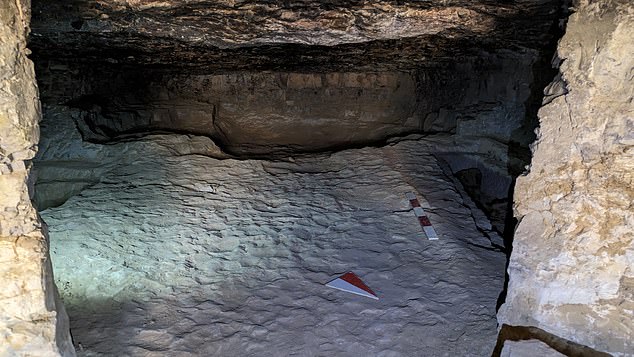
The team found that the elite were buried at the top of the hill, including the mummified remains of Aswan’s commander-in-chief, while the middle class lay below.
Many small families were buried in the recently discovered graves.
“We found two or three of these small groups that may have died from an infectious disease,” Piacentini said.
Offerings were also found in the graves, such as pottery, wooden objects and more. Piacentini said there were “many objects.”
The team plans to study all the mummies and store only the most preserved ones in a museum warehouse.
Piacentini said they would clean the tomb and place the rest of the mummified human remains back where they were originally placed before sealing the tomb again.
“This is their resting place,” she continued. ‘We discover their story, put them back and close the grave. It was important to me from the start.’
